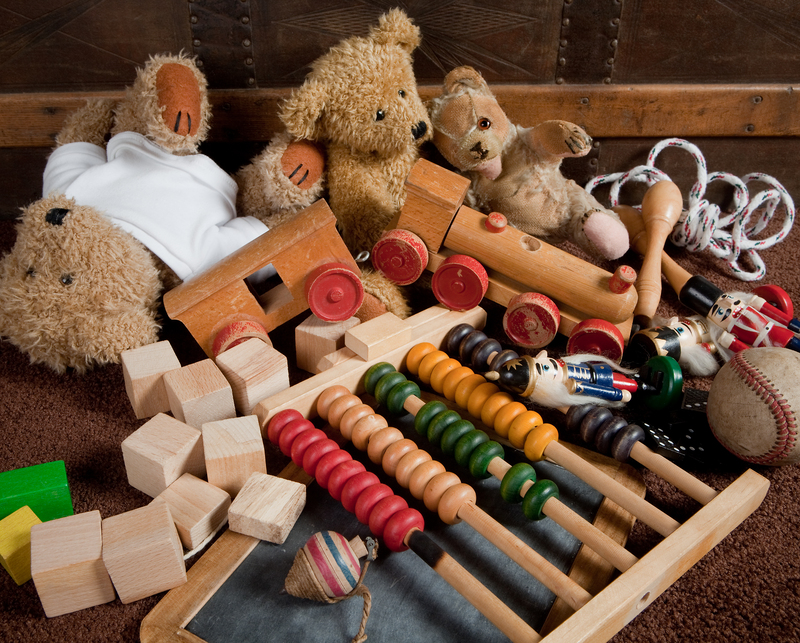Tips for Avoiding Common Mistakes When Storing Your Freezer
Storing food in your freezer is a convenient and cost-effective way to preserve your groceries, minimize waste, and have ingredients on hand at your fingertips. However, improper freezer storage can lead to freezer burn, flavor loss, unnecessary clutter, and even food waste. In this comprehensive guide, we'll provide essential tips for avoiding common mistakes when storing your freezer so you can maximize freshness, space, and efficiency.

Understanding the Importance of Proper Freezer Storage
Before diving into actionable tips, it's critical to understand why correct freezer storage matters. A well-organized freezer and proper food packaging not only help maintain food quality and taste but also make it easy to find items quickly and reduce the risk of spoilage. By following freezer storage best practices, you also save money, reduce foodborne illnesses, and make the most of your available space.
Some of the most common freezer storage mistakes include:
- Improper packaging leading to freezer burn
- Overstuffing the freezer and blocking airflow
- Storing foods past their recommended freeze-by dates
- Neglecting to label and date items
- Placing hot food directly in the freezer
Let's explore how to avoid these freezing food mistakes and keep your freezer organized and food safe.
1. Prevent Freezer Burn with Proper Packaging
Freezer burn is one of the most frequent issues home cooks face when storing food in the freezer. It occurs when air comes into contact with frozen food, dehydrating and oxidizing it, often resulting in off-flavors and tough textures.
How to avoid:
- Use appropriate containers or wraps. Choose moisture-vapor-resistant materials such as heavy-duty aluminum foil, plastic freezer bags, or containers labeled "freezer safe". These materials minimize air exposure and prevent freezer burn.
- Remove as much air as possible. Squeeze out air from freezer bags before sealing or use a vacuum sealing system for long-term storage.
- Double-wrap for added protection. Especially for items prone to drying out, like meats or bread, wrapping them twice helps safeguard against freezer burn and flavor transfer.
- Label everything clearly. Always mark containers and bags with the contents and the freeze date--this helps with rotation and ensures nothing gets overlooked.
2. Don't Overcrowd Your Freezer
One of the critical mistakes when freezing food is stuffing your freezer to the brim. Although a full freezer is more energy-efficient than a nearly empty one, overfilling restricts airflow, causing uneven freezing and potential spoilage.
Tips to maximize space without overfilling:
- Leave space for cold air circulation. Keep an inch or two of space between items; don't block the fan or air vents.
- Organize items by shape and size. Flat packages stack best; store similar items together and place large items at the bottom.
- Use bins, baskets, or drawer dividers. These make grouping items easy, prevent small packages from getting lost, and help keep categories separate (like vegetables, meats, and leftovers).
3. Freeze Food at Its Freshest
When you freeze food, the goal is to "pause" its quality at its peak. Freezing food that's already on the decline won't improve its taste or texture later.
Best practices include:
- Freeze fruits, vegetables, and cooked meals as soon as they are cooled and fresh.
- Avoid freezing foods close to their expiration date unless you plan to use them within a few weeks.
- For fruits and vegetables, blanch them before freezing to preserve color, flavor, and nutrients.
4. Do Not Place Hot Items Directly Into the Freezer
Placing hot food in the freezer raises the temperature inside, which can partially thaw other foods and promote bacterial growth.
What to do instead:
- Allow hot foods to cool at room temperature for about 20-30 minutes, then refrigerate until chilled before transferring to the freezer.
- Divide large pots of soup or stew into shallow containers--this cools them faster and prevents freezer temperature spikes.
5. Label Everything--Don't Rely on Your Memory!
One of the most common freezer organization mistakes is not labeling containers and freezer bags. This leads to "mystery" packages, which often get tossed and wasted.
Labeling strategy:
- Use a permanent marker to write the name of the item and the date frozen on every item.
- Note reheating or cooking instructions for leftovers if needed.
- Consider using color-coded labels for different food groups.
6. Rotate Foods Using the First-In, First-Out Rule (FIFO)
It's easy to forget about foods that have been in the freezer for a long time. The First-In, First-Out rule helps prevent this by using older items first.
How to implement FIFO:
- Organize new additions behind or below older packages.
- Regularly check your freezer inventory (at least once a month) and plan meals around food that needs to be used up soon.
- Keep a freezer inventory list taped to the outside or inside of the door to help stay organized and avoid food waste.
7. Understand Safe Freezer Storage Times
While freezing keeps food safe indefinitely, the quality, texture, and flavor of most foods will diminish over time. Knowing safe storage durations prevents disappointing results when thawing and serving.
General guidelines:
- Ground meats, cooked meats, soups, and stews: 2 to 3 months for optimal quality.
- Raw poultry, uncooked cuts of beef, pork, or lamb: 6 to 12 months.
- Bread and baked goods: 2 to 3 months.
- Fruits and vegetables: About 8 to 12 months.
- If in doubt, check resources such as the USDA FoodKeeper app or website for specific guidelines.
8. Defrost and Clean Your Freezer Regularly
A clean and frost-free freezer runs more efficiently, maintains the correct temperature, and prevents foul odors or contamination.
How to maintain your freezer:
- Defrost manual defrost models whenever the frost builds up more than 1/4 inch thick.
- Clean up spills and leaks immediately to prevent odors and stains.
- Wipe down shelves and drawers with a mild solution of baking soda and water every few months.
9. Avoid Freezing Unsuitable Foods
Not every food freezes well, and storing the wrong types of foods in your freezer leads to poor texture and flavor upon thawing.
Foods you should avoid freezing:
- High-water content vegetables: Lettuce, cucumbers, radishes, and celery tend to become limp and mushy.
- Cream-based sauces and dairy: Sour cream, yogurt, and some soft cheeses may separate or become watery.
- Fried foods: They typically lose their crispiness after freezing and thawing.
- Foods with delicate textures: Meringues, custards, and some pastries do not tolerate freezing well.
10. Be Mindful of Temperature Settings
Your freezer should be set to 0?F (-18?C) or lower to safely store food. Any warmer, and bacteria can start to multiply, risking food safety.
Temperature tips:
- Use a freezer thermometer to monitor the actual temperature inside (especially in older models).
- Try not to open the freezer door unnecessarily; this helps keep the temperature stable.
- If your freezer has a quick-freeze setting for large additions, use it to quickly bring down the temperature of new items.
Bonus Freezer Storage Tips to Maximize Efficiency
- Freeze flat whenever possible: Soups, stews, and sauces stored in freezer bags can be laid flat, making them easy to stack and saving space.
- Portion before freezing: Divide larger bulk items into meal-size portions before storing for easier thawing and less waste.
- Use ice cube trays: Freeze small amounts of pesto, broth, or wine in trays for quick and convenient use.
- Keep a "use first" bin at the front or top for foods near the end of their recommended storage time.
- Package according to use: For example, freeze chicken breasts with marinades, or portion vegetables for stir-fry dinners.

Frequently Asked Questions: Freezer Storage Mistakes Explained
Q: How can I prevent my freezer from smelling bad?
A: Regularly clean your freezer, keep foods well-wrapped, and don't leave foods in there for too long. Placing an open box of baking soda inside can help absorb lingering odors.
Q: What's the best way to organize a side-by-side or chest freezer?
A: For upright freezers, use shelves and baskets to group similar foods. In chest freezers, use stackable bins or reusable shopping bags for easily accessing items--put frequently used foods on top.
Q: Is it safe to refreeze thawed food?
A: If the food was thawed in the refrigerator and didn't reach a temperature above 40?F, it is generally safe to refreeze though some quality may be lost.
Conclusion: Enjoy an Organized, Efficient, and Healthy Freezer
Proper freezer management is about more than just tossing items into a cold space. By adopting these tips to avoid common mistakes when storing food in your freezer, you'll reduce waste, maintain your foods' best flavors and textures, and save money. Start today by reviewing your freezer, discarding old or unidentified foods, and implementing these smart habits. You'll reap the rewards of better meals, less stress, and a healthier kitchen environment!
Looking for more food storage tips? Explore our other guides on pantry organization, refrigerator storage, and meal prepping for even greater savings and convenience.



